AIRFRYDAY TALKING POINT
Reinventing the art of the potjie for the age of the air fryer

To get the best out of cooking, we need to master the utensils we cook in. That means everything from the vintage potjies of the Voortrekkers to the air fryer lurking in your kitchen.
Much as I love my two air fryers, which I find myself using more and more for a growing variety of things, I have a great fondness for the two potjies which often feel neglected under the bench near my braai.
If potjies could glower, I’m sure they would be giving the evil eye to the air fryers sitting snugly and smugly on the countertop in the warmth of the kitchen. If air fryers could talk, I suspect they’d tell me how offended they were by the strange round pots out back, without being able to explain exactly why they caused offence. Just by being old-fashioned and out of date, perhaps.
But potjies have no need to feel out of step with the modern world even if they might be baffled by the millennial air fryers inside. And they’re no mystery to anybody who loves to cook, and who knows how and what to cook in them. So, while indoors I learn more and more every day about my air fryers and how to get the best out of them, I’m giving plenty of attention to my potjies as well.
They were out of fashion once before
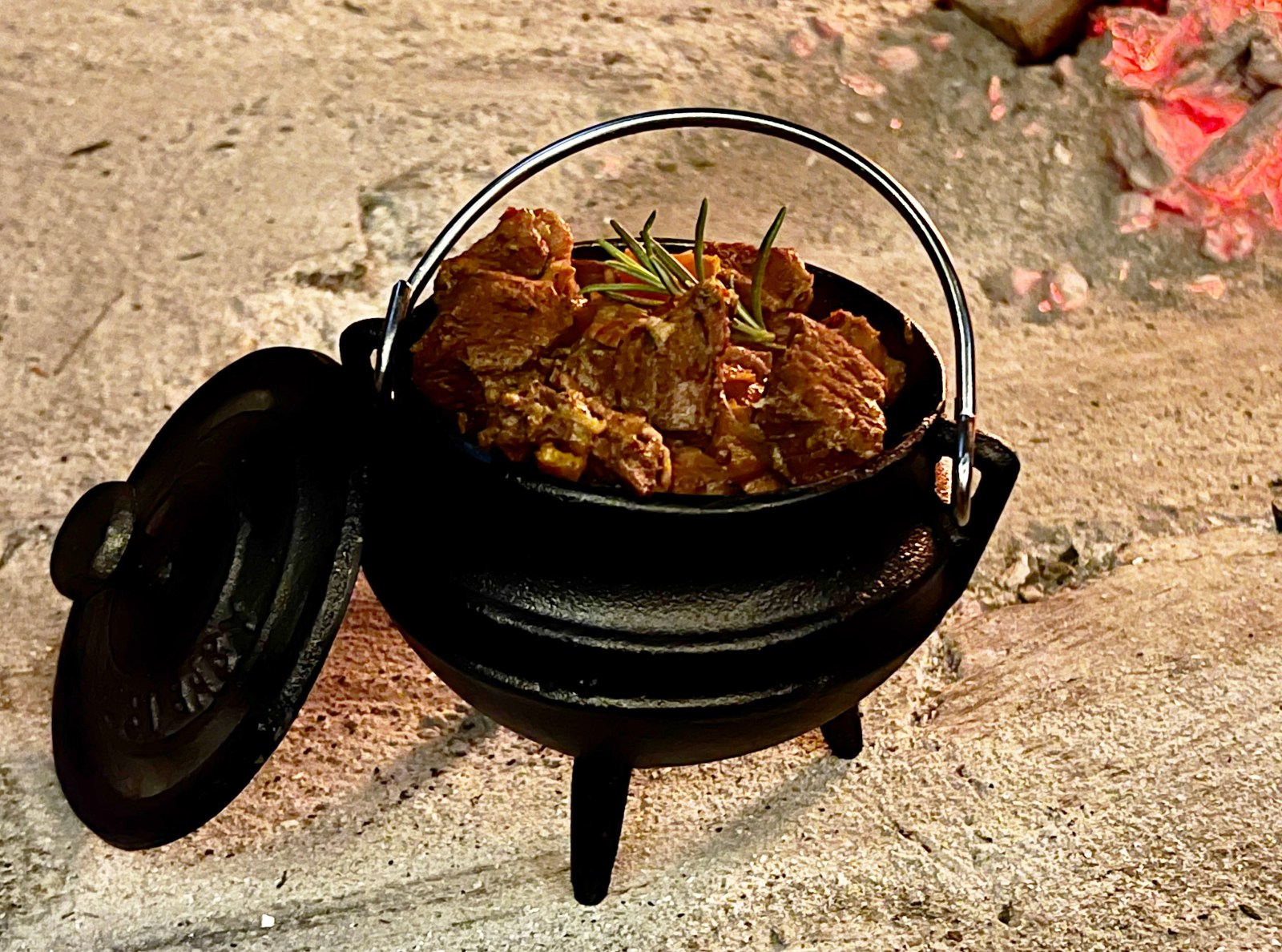
Spiced eland potjie stew, served in a miniature three-legged pot. (Photo: Tony Jackman)
When potjiekos first became a craze in the 1980s, as opposed to the historical curiosity it had been since the 1830s when the Great Trek commenced and the voortrekkers used their three-legged cast iron pots to cook in at the end of the day’s trek, it was presumed that there was one strict way to cook in one.
You layered your meat and vegetables in it from bottom to top, in a particular order, poured in your stock or liquor (in modest amounts), put the lid on and left the thing alone for three hours. To lift the lid at any point was considered anathema.
A potjie meal was always “built” (gebou). Layered. The meat was first browned in oil over moderate coals, then onions were cooked. Vegetables such as carrots, cauliflower and/or cubes of pumpkin were added next, then potatoes. A cooking sauce was poured in from the edge of the pot; not too much. The theory is that once the lid is put on tightly and heat is applied, the sauce that has sunk to the bottom creates steam which rises to cook what is higher up.
You never stirred your potjie during its two to three hours of cooking. You never so much as lifted the lid until it was deemed ready to serve. The thinking is that by stirring you mush everything together, which would make it merely a stew, whereas by leaving it alone each layer can cook individually and retain its own character and flavour, while benefiting from the aromatics contained in the rising steam. Potjiekos is not regarded as a stew.
Imagining the Voortrekker way with a potjie
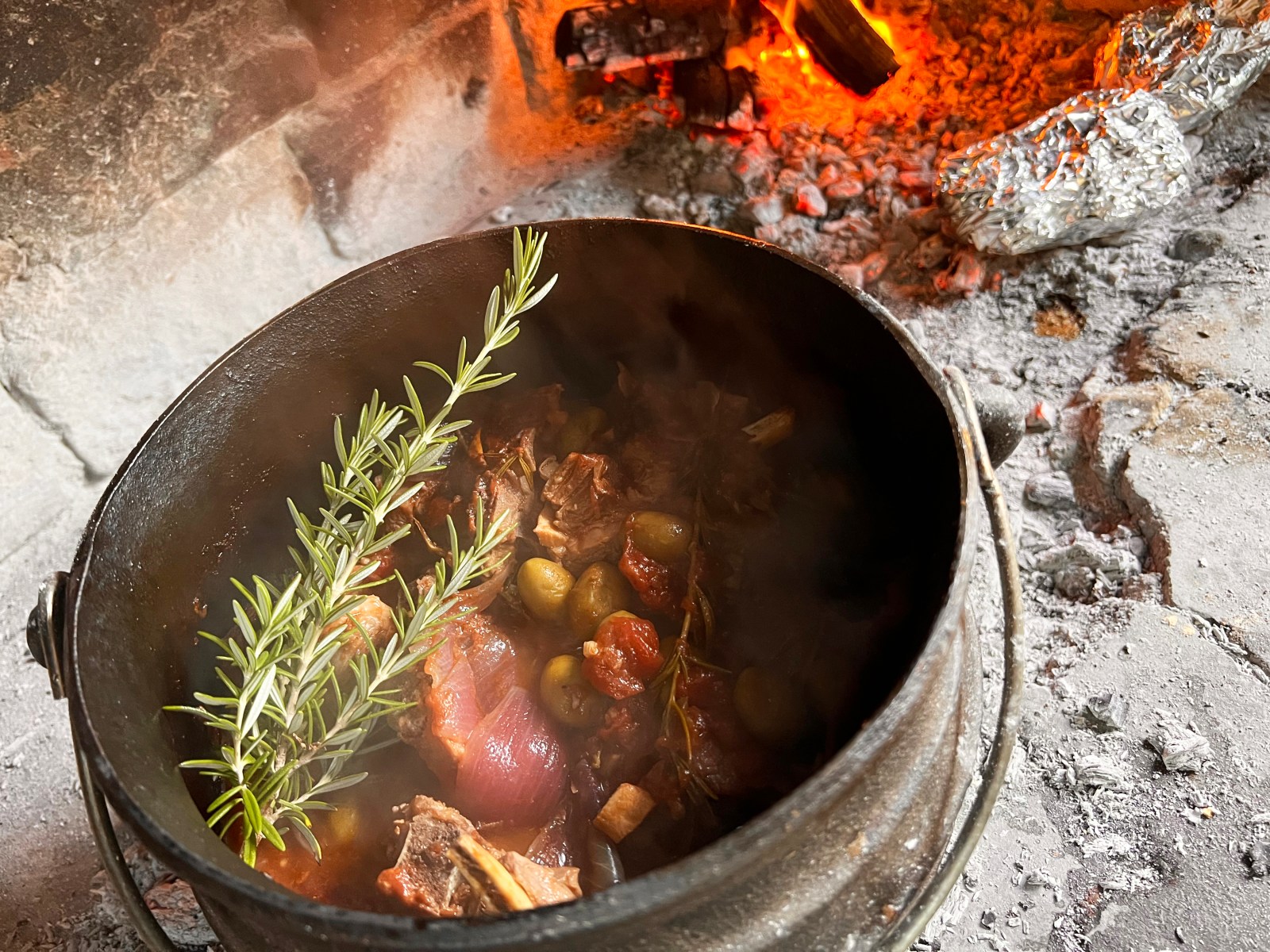
Tony Jackman’s lamb and green olive potjie. (Photo: Tony Jackman)
The most common meat used in a Voortrekker potjie was venison, although no self-respecting boer would have turned his nose up at mutton if a sheep were to be available. But game was, well, fair game. While on a day’s trek, eyes would be peeled for potential meat for the pot. Once the sun showed signs of waning, the clan would stop, form a laager if travelling in a substantial convoy, fires would be lit and the potjie brought down from its storage place, hanging somewhere in a wagon, to find fire once more. The quantity of meat needed for the evening meal would be used in the potjie. Any other meat could be salt-cured for later use or made into biltong to dry in the air while on trek. Vegetables used could only have depended on their availability.
Once settled in what was to become a new town, the nomadic stoics (or stoic nomads) could finally grow their own vegetables and these would have made their way into their potjie meals, piled above the meat in the order that would become the tradition, cooked either on a fire on the werf or in the hearth of the newly built kitchen range.
For some 15 decades to follow, potjies and the use of them would remain in the shadows of the broader society, used in the homes of the generations that followed the time of the trekkers, perhaps brought out on occasion in some homes, or increasingly overlooked in others as more modern utensils gained favour in their kitchens. I’ve seen a 180-year-old Voortrekker potjie up close, all brittle in its eggshell antiquity.
Then came the Eighties…
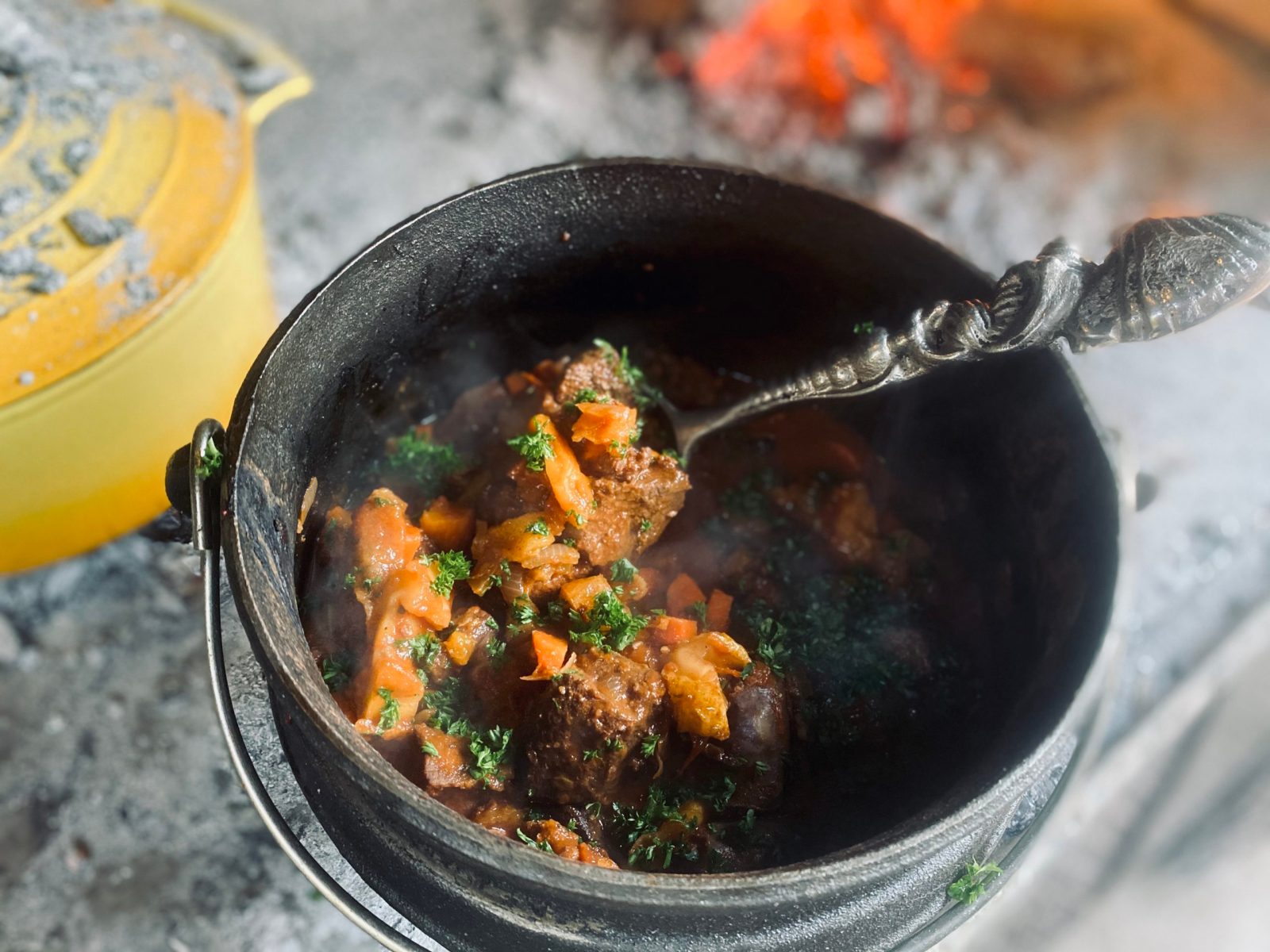
Ribbok fillet and venison wors potjie. (Photo: Tony Jackman)
In the 1980s, South Africans rediscovered the potjie in a big way. Suddenly, everyone had one. Potjiekos parties became an alternative kind of braai. It is a superbly sociable thing because the potjie takes a long time to cook and must be left alone all the while, so the throng would sit and stand around chatting and drinking while the meal pretty much prepared itself.
And everyone obeyed the old rules that had come down through the decades, in the way that the methods of the old times are passed on to us from generation to generation: meat first (browned, along with onions), vegetables next, potatoes or other starch at the end, sauce poured in at the side. Often, rice was added before pouring the sauce in. This too went on top, to be steamed by the rising vapours.
Cookbooks devoted entirely to the potjie started to appear. Magazines started to run features and recipes about potjiekos. Packs of sundry meat cuts marked “potjiekos” started to appear in the butchery sections of our supermarkets. Potjiekos cooking competitions started to spring up in dorpies in the platteland.
A cooking curiosity from colonial times had turned mainstream.
But time has moved on. Where to now?
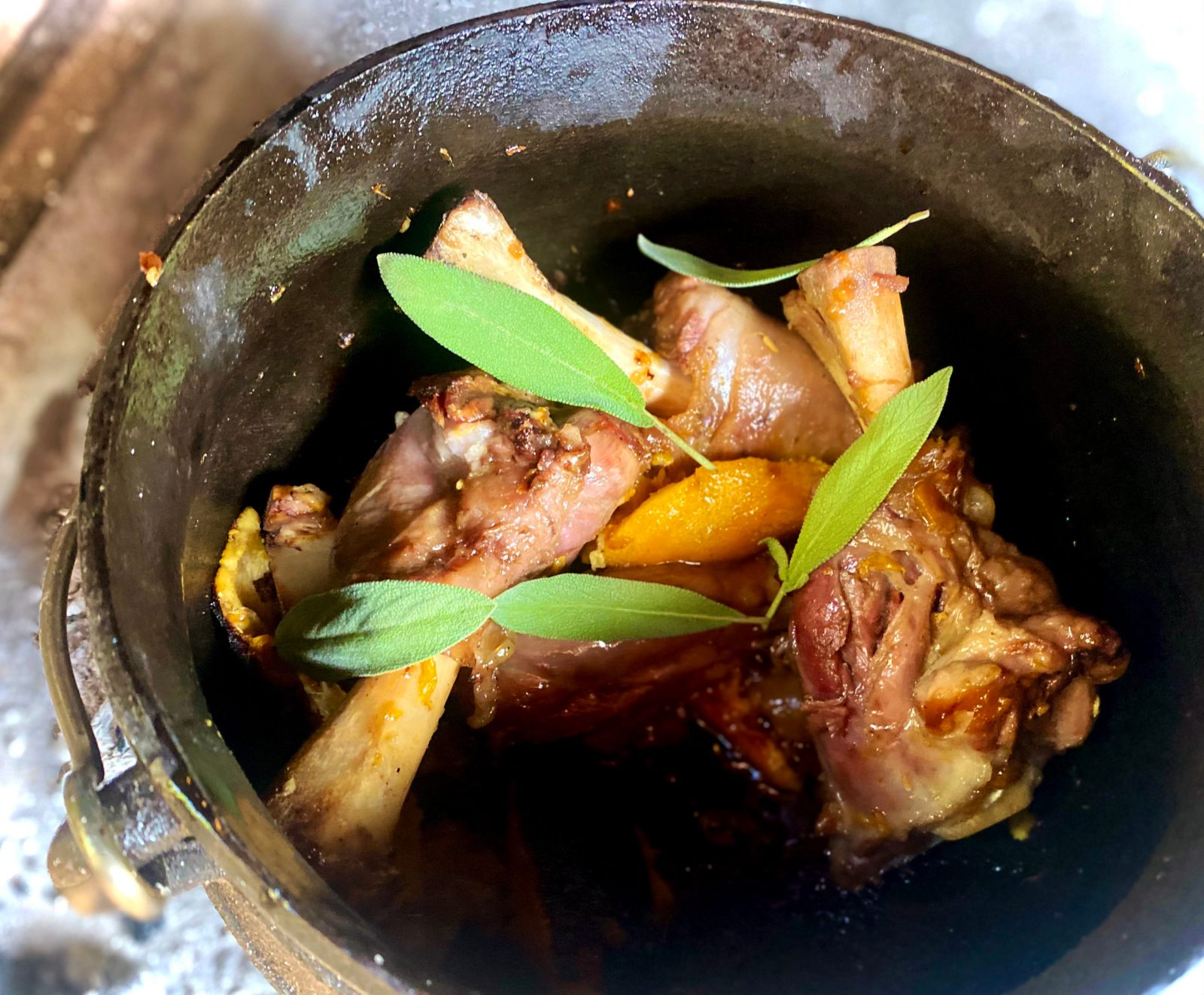
Sage, ginger and orange flavour this delicious lamb shanks potjie. (Photo: Tony Jackman)
We might reasonably decide, now, that there are other ways of working with a potjie, and the inventive cook, perhaps frustrated by the rigidity of the old ways of potkjiekos cooking, may well start looking at the three-legged beast with fresh eyes and think, hang on, there must be other ways of using one too…
With this thought in mind, three years ago, I tried my hand at treating a potjie as an outdoors roasting oven. I roasted a whole chicken in it, and it turned out so maddeningly delicious and golden that I have done it several times since. I’ve done whole chicken potjie roasts with sage butter, ginger, cumin and lime, and rosemary and lemon zest butter.
The key to roasting a chicken in a potjie is butter, and lots of it. It also requires more coals under the potjie, i.e. more heat, than you would use with a conventional potjie recipe.
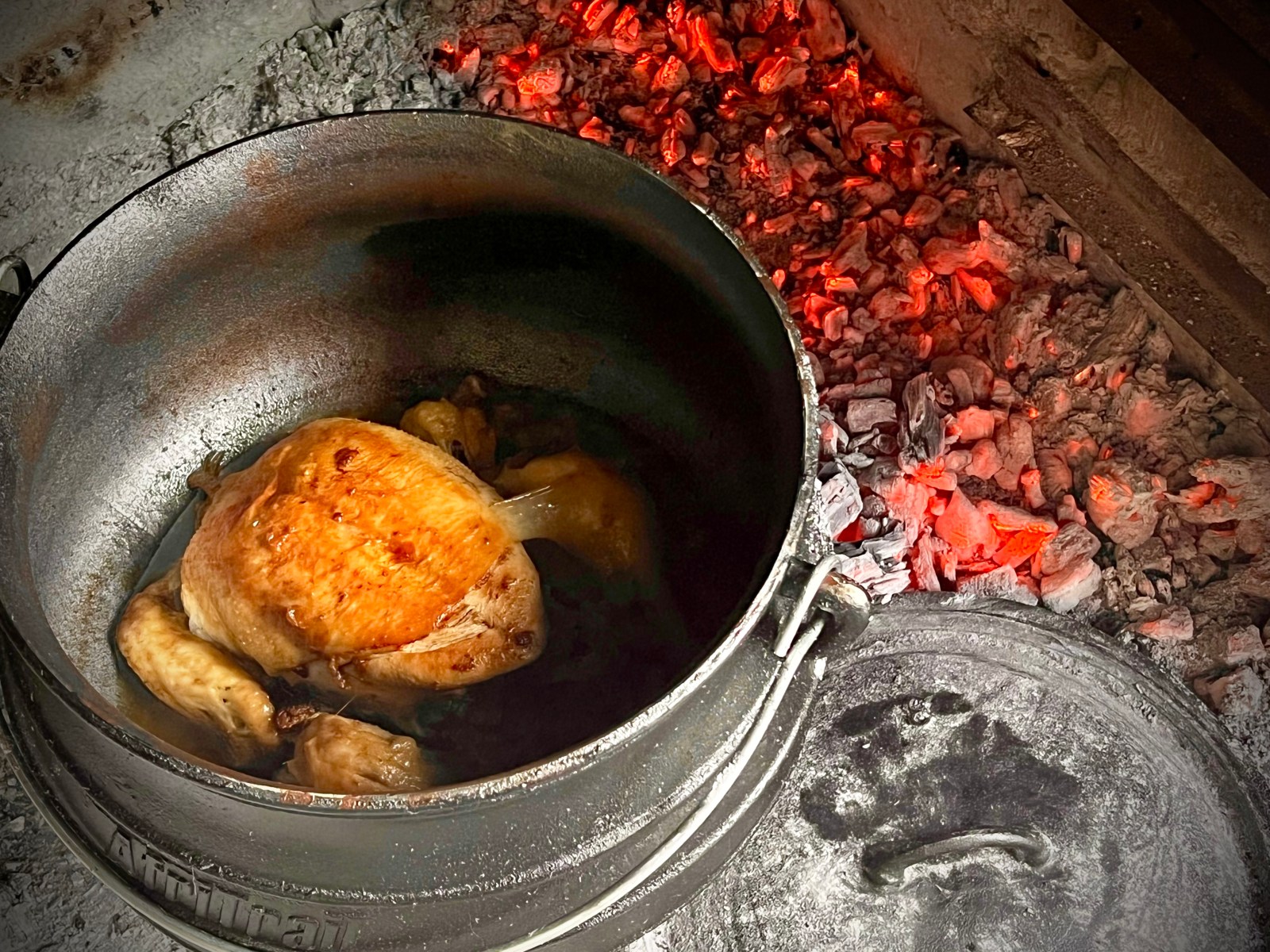
Tony Jackman’s ginger roast chicken in a potjie. (Photo: Tony Jackman)
Since my exploration of chicken roasts in a potjie I have dabbled in other meats and recipes. I made the Italian beef stew called spezzatino di manzo in a potjie, with happy results. I used beef short rib for that. I made a Spanish lamb’s neck potjie with lots of tomatoes, peppers and chillies. I made a venison neck and guanciale potjie, using blesbok neck, pig’s cheek and lard (pork). I cooked lamb’s neck and shoulder together in a potjie with lavender and orange. I’ve done spiced venison and pork belly together, cooked pork neck with red cabbage and hanepoot, made curried oxtail, cooked lamb shanks with ginger, sage and orange, ribbok and dried fruit, and one lazy Saturday in Arniston I made citrus-tinged lamb’s neck potjie.
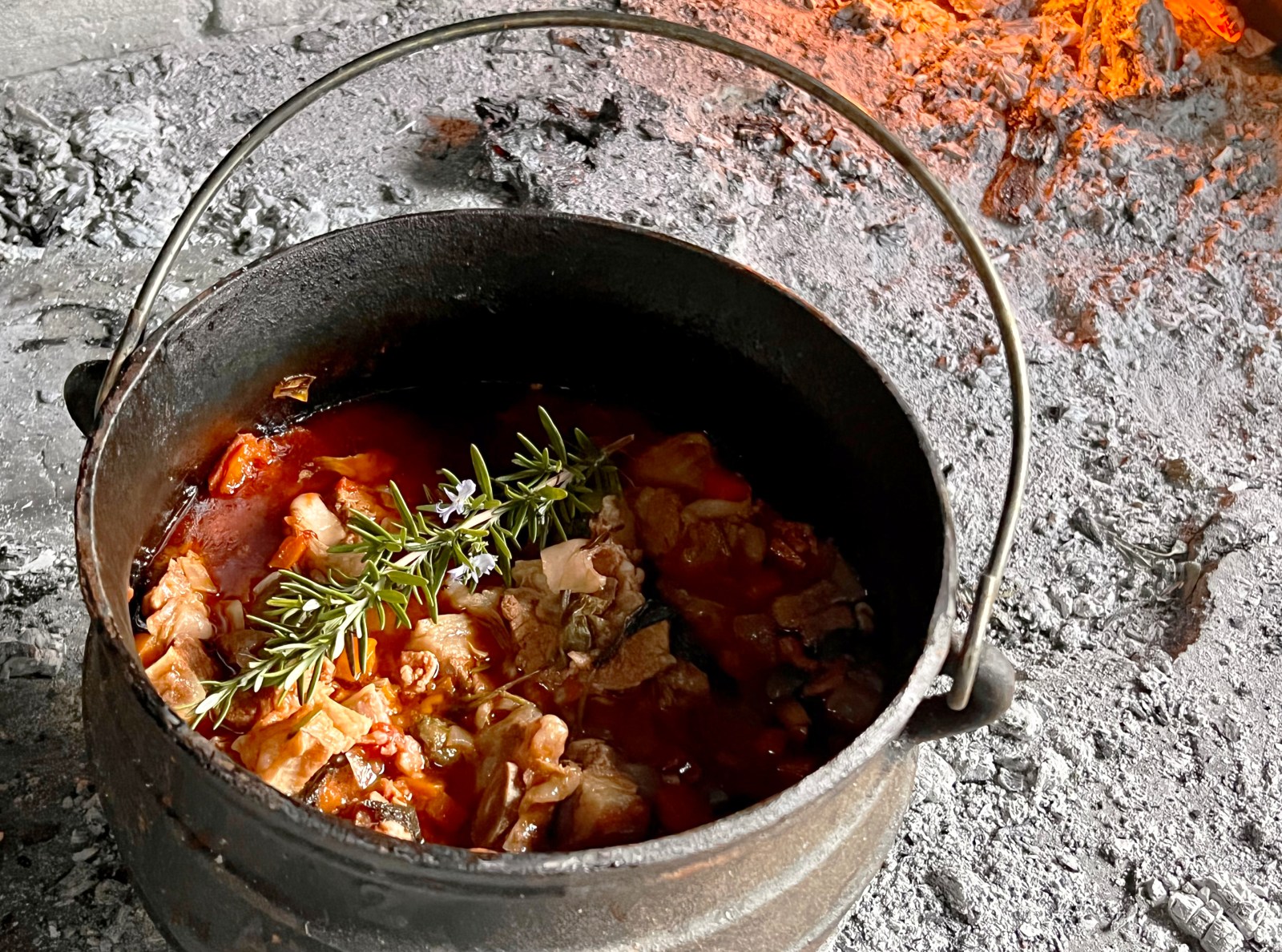
Tony Jackman’s spezzatino di manzo potjie. (Photo: Tony Jackman)
Chicken appears in my potjies in many ways other than as an outdoor roast, in recipes such as Chicken and pears and Chicken, chorizo and olives.
I don’t see why we can’t make a bredie in a potjie. Waterblommetjies are at the tail end of their short season, so if you can find some, have a go at them in a potjie this weekend. The kind of recipe you cook in a Moroccan tagine can be cooked in a potjie. Try my sweetly spiced lamb shanks recipe with saffron couscous but do it in a potjie, or my Moroccan chicken tagine with dates, honey and almonds, again, in a potjie. My chicken with dates and chickpeas will work too, as will my lamb shank and date tagine recipe.
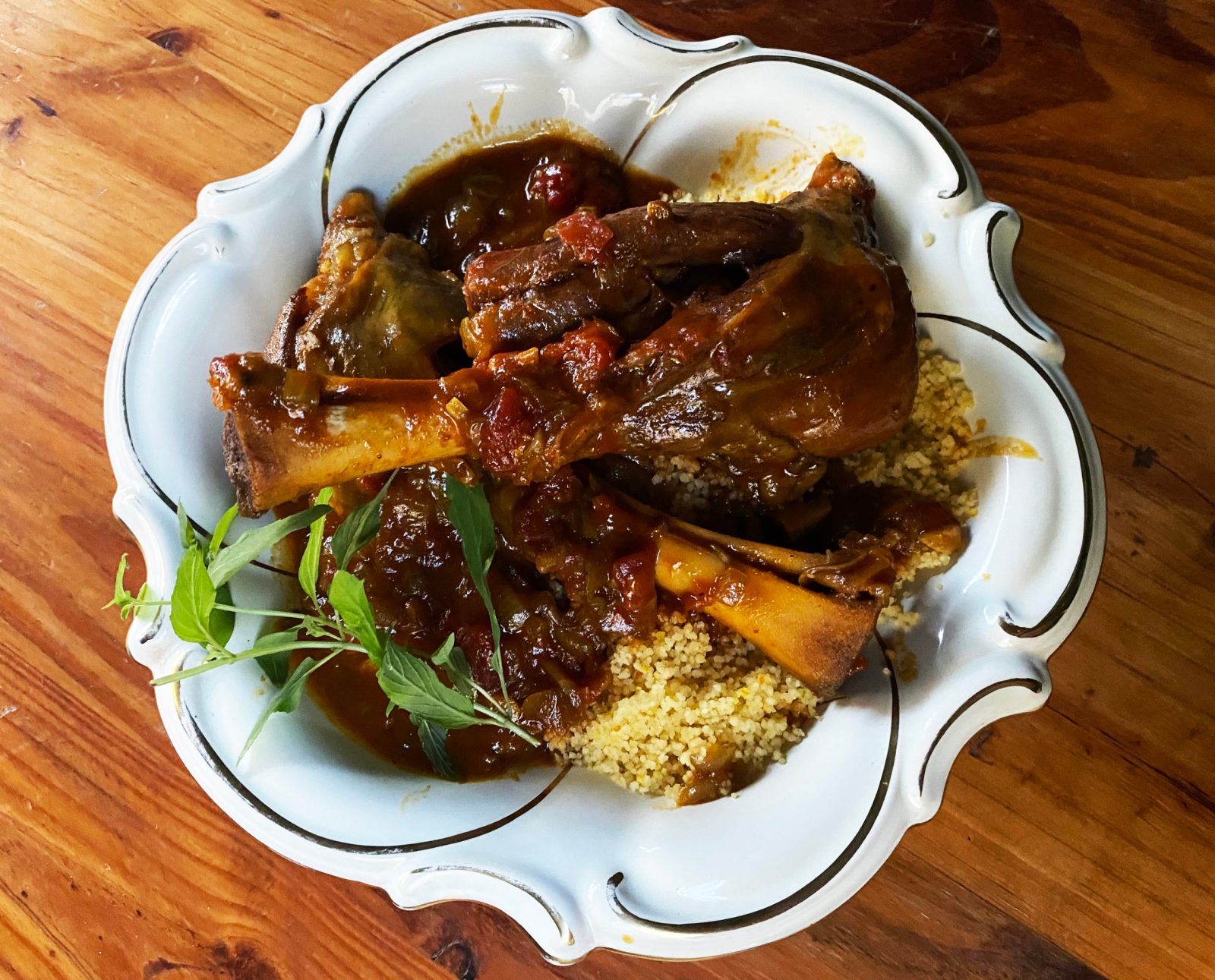
Sweetly spiced lamb shanks. Try it in a potjie. (Photo: Tony Jackman)
There are some dishes I have in mind to try, and the looming summer might be the time to get to them: a potjie cassoulet (pork and beans), a version of a bouillabaisse (seafood stew), a chowder perhaps; Coq au Vin, the classic French dish of chicken in red wine; beef Bourguignon, that other French classic with bacon, mushrooms and onions; osso buco, the wonderful Italian veal shin stew; a Texas brisket such as this one I cooked during lockdown. Or a whole joint: a “hammer” of beef shin on the bone such as this one.
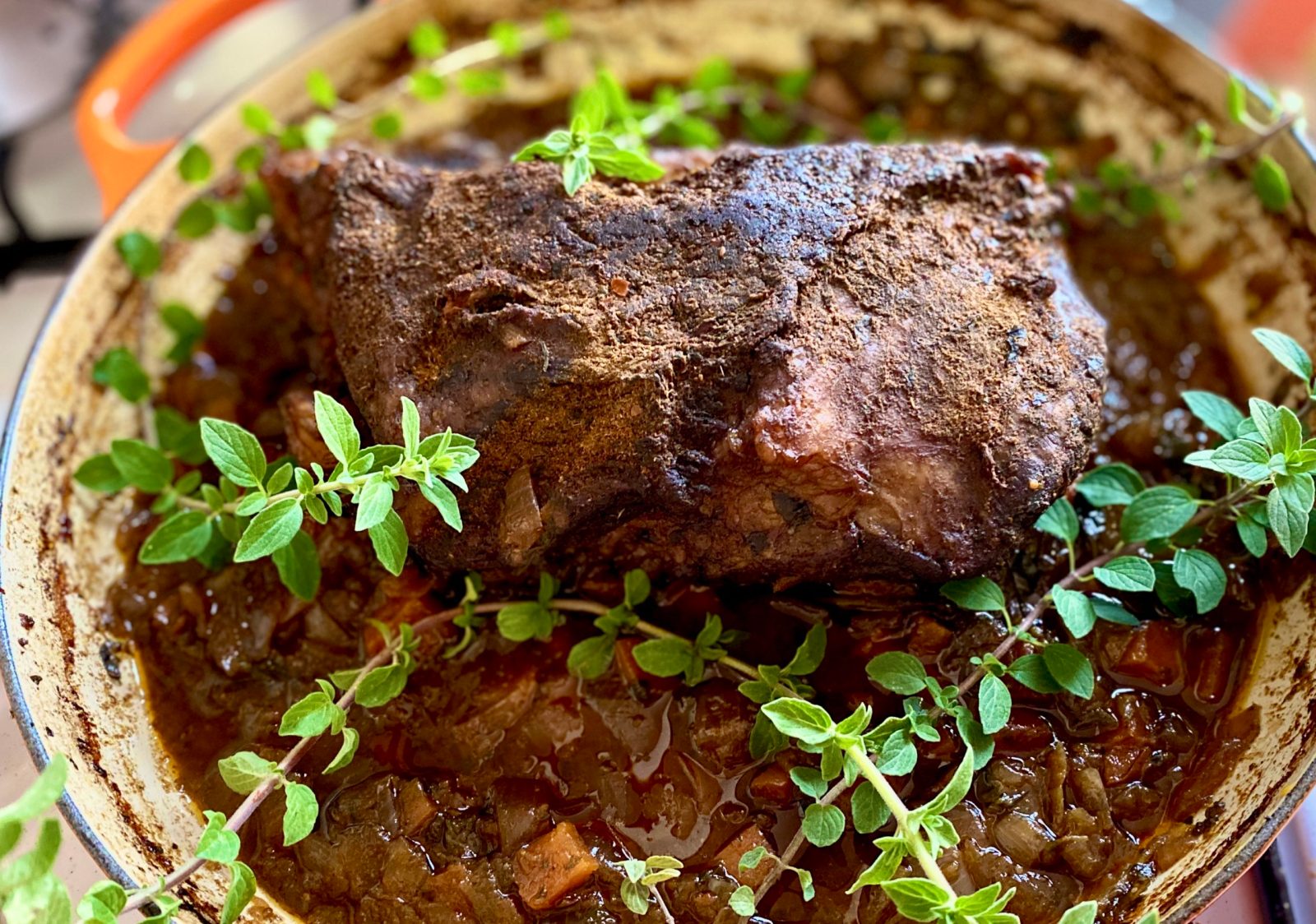
Texan brisket. Try this in a potjie too. (Photo: Tony Jackman)
High on my list is to use a potjie for a layered Royal Biryani, with lamb, finished (once the lid has been lifted) with crispy onions, saffron and a sprinkling of rosewater. Imagine the aromas tempting you all afternoon while that is cooking.
Maybe the potjie is an antidote to the air fryer. Maybe they complement one another perfectly. A potjie gives us hours of happy contemplation while it makes our food and we chat to our friends or read a book, while the air fryer gets supper sorted out at speed without any wasting of time. We need one as much as we need the other. There’s room in our lives for both. DM





 Become an Insider
Become an Insider
Loved this!
The biryani idea has me digging out my potjie, brilliant!